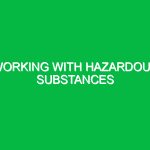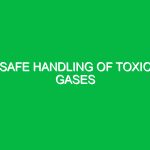In an era where chemicals are ubiquitous in industries ranging from manufacturing to healthcare, the significance of effective communication about hazards cannot be overstated. Understanding Global Harmonized System (GHS) labels serves as a beacon of safety, guiding workers and consumers through the complexities of chemical hazards. These labels not only inform about the potential dangers associated with substances but also provide critical information on safe handling and emergency measures. In this article, we will explore the GHS labels in detail, their relevance to health, safety, and environmental (HSE) practices, the associated hazards, and best practices for ensuring safety in various environments.
What are GHS Labels?
The Global Harmonized System (GHS) is an international standard for classifying and labeling chemicals. Established by the United Nations, it aims to ensure that information about chemical hazards is communicated clearly and consistently across different countries and industries. GHS labels are essential tools in this system, featuring standardized elements such as pictograms, signal words, hazard statements, and precautionary statements.
Each component of the GHS label serves a unique purpose. The pictograms, for instance, visually convey the nature of the hazards, while the signal words—either “Danger” or “Warning”—indicate the severity of the hazard. The hazard statements detail the specific risks associated with the chemical, and the precautionary statements guide users on how to minimize those risks. This uniform approach enhances understanding, reduces the potential for accidents, and fosters a culture of safety in workplaces worldwide.
Relevance of GHS in the HSE Domain
In the HSE domain, the implementation of GHS labels is crucial for several reasons. Firstly, they help to protect workers by providing clear and accessible information about the chemicals they handle daily. For example, a study conducted in a manufacturing plant revealed that after implementing GHS labeling, incidents related to chemical spills reduced by 30% within a year (source: National Institute for Occupational Safety and Health). This statistic underscores how proper labeling can directly impact workplace safety.
Secondly, GHS labels play an essential role in regulatory compliance. Organizations must adhere to local and international regulations regarding chemical handling. Understanding GHS labels ensures that companies remain compliant, avoiding potential legal consequences and fines. Furthermore, as industries globalize, understanding GHS labels helps companies operate across borders without miscommunication regarding chemical safety.
Identifying Hazards Associated with GHS Labels
Understanding GHS labels necessitates an awareness of the various hazards they encompass. These hazards can be broadly categorized into physical hazards, health hazards, and environmental hazards.
Physical Hazards
Physical hazards pertain to the properties of chemicals that can cause physical harm. Examples include:
- Flammability: Chemicals labeled as flammable can ignite easily, posing a fire risk. For instance, a solvent used in paint manufacturing may have a high flash point, indicating it can catch fire at lower temperatures.
- Explosiveness: Certain chemicals can lead to explosions under specific conditions. Understanding the labels on explosives is vital for preventing catastrophic incidents.
- Corrosiveness: Some substances can corrode metals or cause severe skin burns. GHS labels indicate these hazards clearly, allowing for careful handling.
Health Hazards
Health hazards are associated with the potential for chemicals to cause adverse health effects. Key health hazards include:
- Toxicity: Chemicals labeled as toxic can cause harm or death with minimal exposure. For example, certain pesticides are highly toxic and require stringent safety measures.
- Carcinogenicity: Some chemicals may cause cancer, and GHS labels indicate these risks to ensure proper precautions are taken.
- Reproductive toxicity: Chemicals that can affect reproductive health must be clearly labeled to protect workers’ health.
Environmental Hazards
Environmental hazards refer to the impact chemicals can have on the environment. These hazards include:
- Ecotoxicity: Some chemicals can be toxic to aquatic life and other organisms, necessitating caution in disposal and handling.
- Ozone depletion: Chemicals that contribute to ozone layer depletion are classified under GHS labels to prevent environmental damage.
Safety Precautions and Best Practices
To mitigate the risks associated with the hazards identified on GHS labels, it is crucial to implement effective safety precautions. Here are some best practices:
Training and Education
One of the most effective ways to ensure safety is through comprehensive training programs. Employees should be educated about how to read and interpret GHS labels and the significance of each component. Regular training refreshers can keep safety at the forefront of workplace culture.
Proper Personal Protective Equipment (PPE)
Using the right personal protective equipment is essential when handling hazardous materials. Depending on the chemical, this may include gloves, goggles, and respirators. For instance, when working with corrosive substances, suitable gloves and face shields are mandatory to prevent skin contact and eye injuries.
Regular Inspections and Maintenance
Conducting regular inspections of chemical storage areas and equipment can help identify potential hazards before they lead to incidents. For example, checking for leaks in containers or ensuring that safety showers and eyewash stations are functional can save lives.
Emergency Preparedness
Having a robust emergency response plan is vital for any workplace that handles hazardous materials. This includes established procedures for spills, exposure incidents, and evacuation protocols. Regular drills can prepare employees for real-life scenarios, ensuring they know how to react swiftly and safely.
Regulations and Standards Governing GHS Labels
Understanding the legal framework surrounding GHS labels is crucial for compliance and safety. Various regulations govern the use of GHS labels worldwide:
- OSHA Hazard Communication Standard (HCS): In the United States, OSHA’s HCS aligns with GHS to ensure that chemical hazards are communicated effectively in the workplace.
- European Union CLP Regulation: The Classification, Labelling and Packaging (CLP) Regulation in the EU implements GHS principles, requiring chemical manufacturers to classify and label their products accordingly.
- Globally Harmonized System of Classification and Labelling of Chemicals (GHS): This UN initiative provides the framework for chemical classification and labeling globally, ensuring consistency across borders.
Conclusion
Understanding global harmonized system (GHS) labels is paramount in today’s chemical-dependent industries. These labels not only provide critical information about hazards but also play a vital role in promoting health, safety, and environmental preservation. By recognizing the hazards associated with chemicals, adhering to best practices, and complying with relevant regulations, organizations can create safer workplaces and minimize risks to employees and the environment. Embracing GHS labeling is not just about compliance; it’s about fostering a culture of safety that prioritizes well-being and environmental responsibility.


